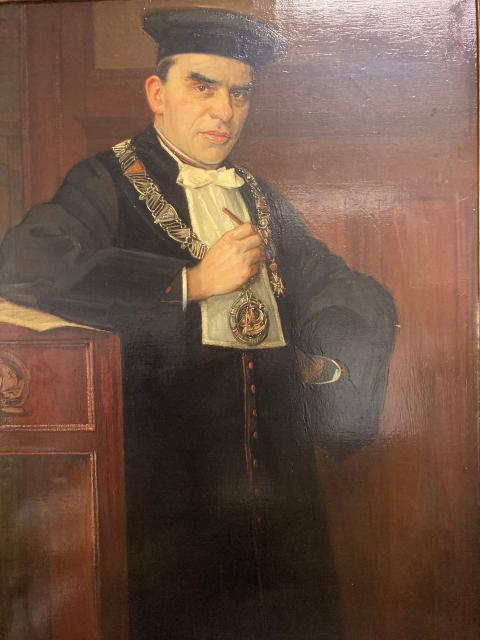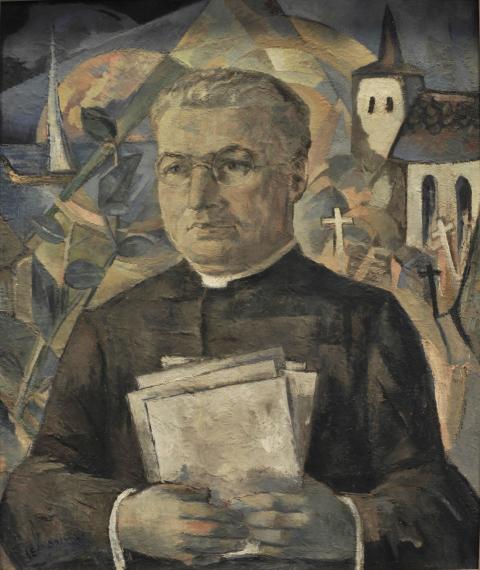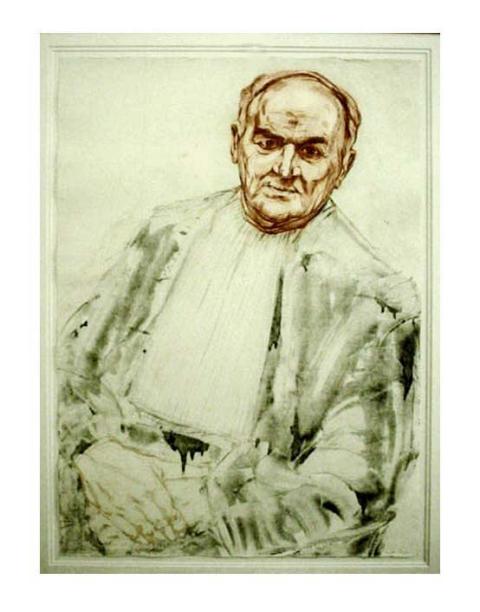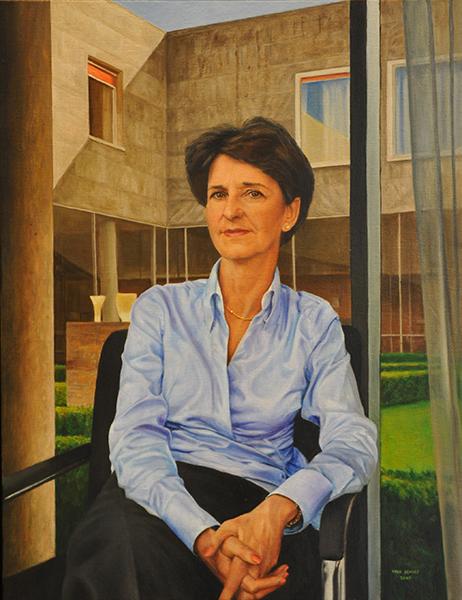Governors in academic circles
Tilburg University, as the various portrait series at the university show, has seen quite a parade of governors come and go. In the portrait room, all the Rectores Magnifici are on display; here, the portraits of some striking administrators hang.
A university governor does not have an easy time. This has to do with the nature of the organization. In the ministerial organization, there is what the French thinker Jean Bodin called a "descending" sovereignty: the authority of the minister descends, as it were, over the various layers of the organization. In the university organization, the opposite is true. Sovereignty springs up "on the shop floor," with the chair holders. That is where the pursuit of scholarship takes place, where research and education are developed and carried out, where ideas initiate, where networks with colleagues in the discipline at home and abroad are developed, and where the university is made. Governors are derivatives of this base and, thus, not always to be envied. Consequently, in the United States, they are somewhat disparagingly called administrators at universities.
Nevertheless, the law requires the university to have a form of governance with an Executive Board that is accountable to the University Council. The members of that Council and the Board are far from always in agreement but get along quite harmoniously. What most do agree on is that Tilburg University has had a number of important and high-profile governors, in various ways.
Thomas Goossens
The first Rector (and also "treasurer") was Thomas Goossens (1882-1970). He can be seen as the founder of the Rooms Katholieke Handelshoogeschool. He was Rector Magnificus from 1927-1930 and the academic years 1934-1935 and 1940-1941. At that time, it was still common for Rector Magnificus to be appointed annually. This priest and historian made significant contributions to the intellectual and cultural emancipation of Catholics, but also had a reputation for being "difficult to access," "unapproachable," and even "stingy.”

The portrait of Thomas Goossens is by Jan van Delft, from 1929
Martinus Cobbenhagen
Martinus Cobbenhagen (1893- 1954) was Rector Magnificus during the periods 1932-1933, 1937-1938, and 1945-1946. Because of his commitment to the governance of the institution and his attention to student life and alumni, he earned himself the reputation as the "spiritual father of the university community," according to his friend and colleague Hendricus Kaag. Because of his efforts to link economics and ethics, the importance he attached to philosophical aspects and his manual for education—with philosophy as a compulsory course—he still enjoys the reputation of Tilburg University’s founding father. During World War II, due to the university’s dismissive attitude toward the German occupiers, Cobbenhagen was interned as a hostage in neighboring Haaren. The oldest building on campus is named after Cobbenhagen.

The portrait of Martinus Cobbenhagen is by Jean Adams, from 1956
Piet Verheyen
Piet Verheyen (1931-2021) was Full Professor of Economics, and a man who served the university several times as a governor. He was an old-school professor in the sense that he combined research and education with university governance and ancillary positions. He served as Dean of the sub-School of Econometrics (1968-1971 and 1984-1985), Dean of the School of Economics (1968-1971 and 1986-1987), member of the Executive Board (1971-1973, 1985 and 1993) and President of the Executive Board (1988-1991). In this capacity, he managed important student protests such as the 1969 occupation of "Karl Marx University.” He supported, at a time when the university primarily still played a regional role, the development and arrival of internationally oriented institutes, such as the J. F. Kennedy Institute and CentER (Center for Economic Research).

The portrait of Piet Verheyen is by Paul van Dongen, from 2010
Yvonne van Rooy
In the summer of 1997, the appointment of the first female Board president at a Dutch university was met with a mixture of enthusiasm and reservations. Jurist Yvonne van Rooy (1951) was a successful politician of CDA origin. And it is precisely in this Catholic provenance that the reservations lay of the now predominantly left-leaning university community.
Yvonne van Rooy emerged as a widely appreciated governor who did not shy away from confrontation. A daring feat was the naming of the university in 2003. With Katholieke Universiteit Brabant (KUB), Catholicism, and Brabant and a "hideous red logo," Van Rooy felt that it was not a good idea to go abroad. A different name was needed for the internationalizing university. She also managed to convince the Catholic contingent that the name "Universiteit van Tilburg" was a better one. But that was the name by which it was generally known. The real name, the baptismal name, would remain unchanged Stichting Katholieke Universiteit Brabant. How could one now say no to Van Rooy? The identity remained guaranteed, and the baptismal name was not erased from memory: every month, staff find it on their paychecks.

The portrait of Yvonne van Rooy is by Fred Schley, from 2003
More about history and academic heritage
The Tilburg University academic heritage is a very diverse set of archives, visual materials, collections, devices, recorded stories, et cetera that relate to the history of the university.